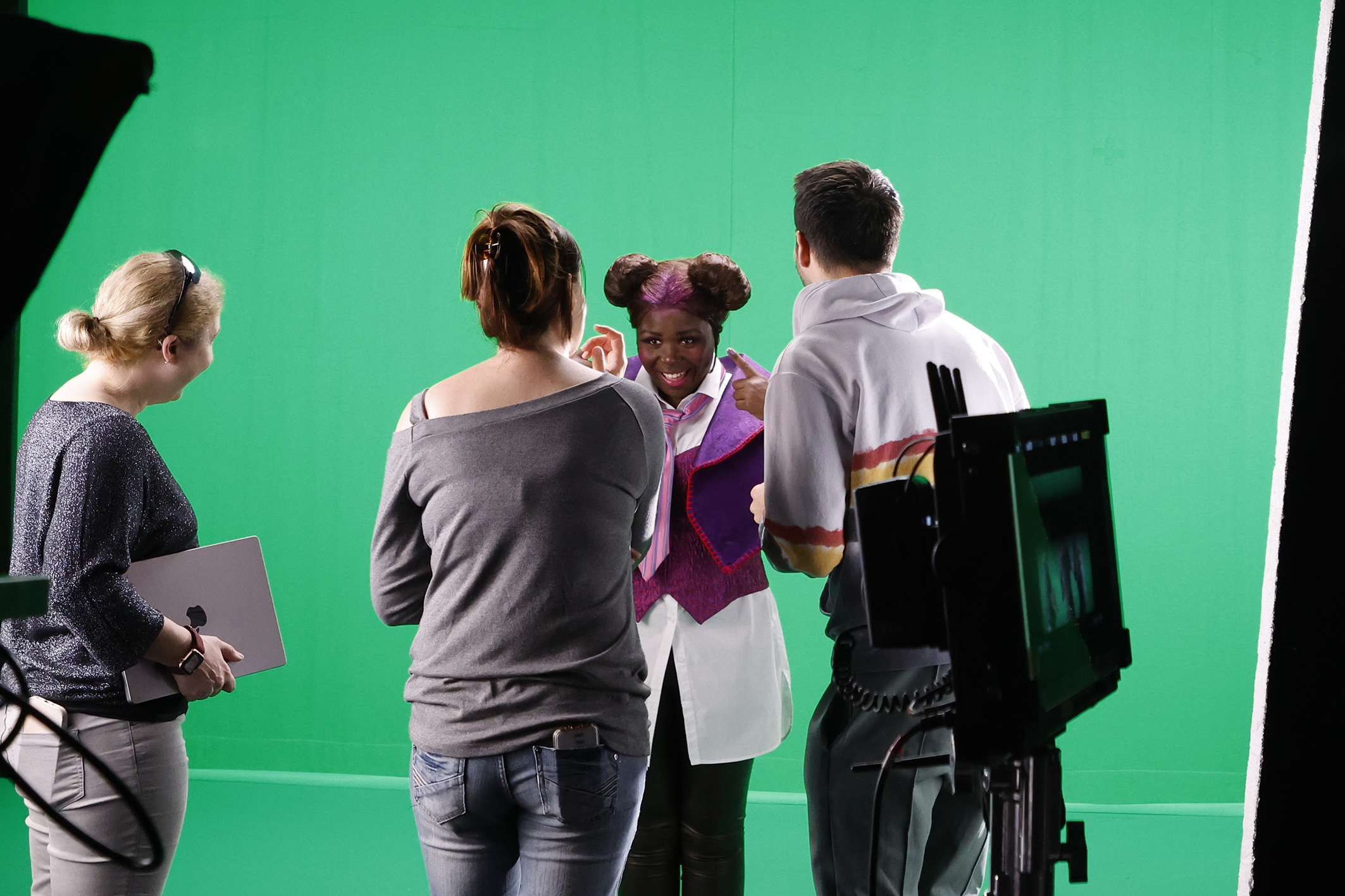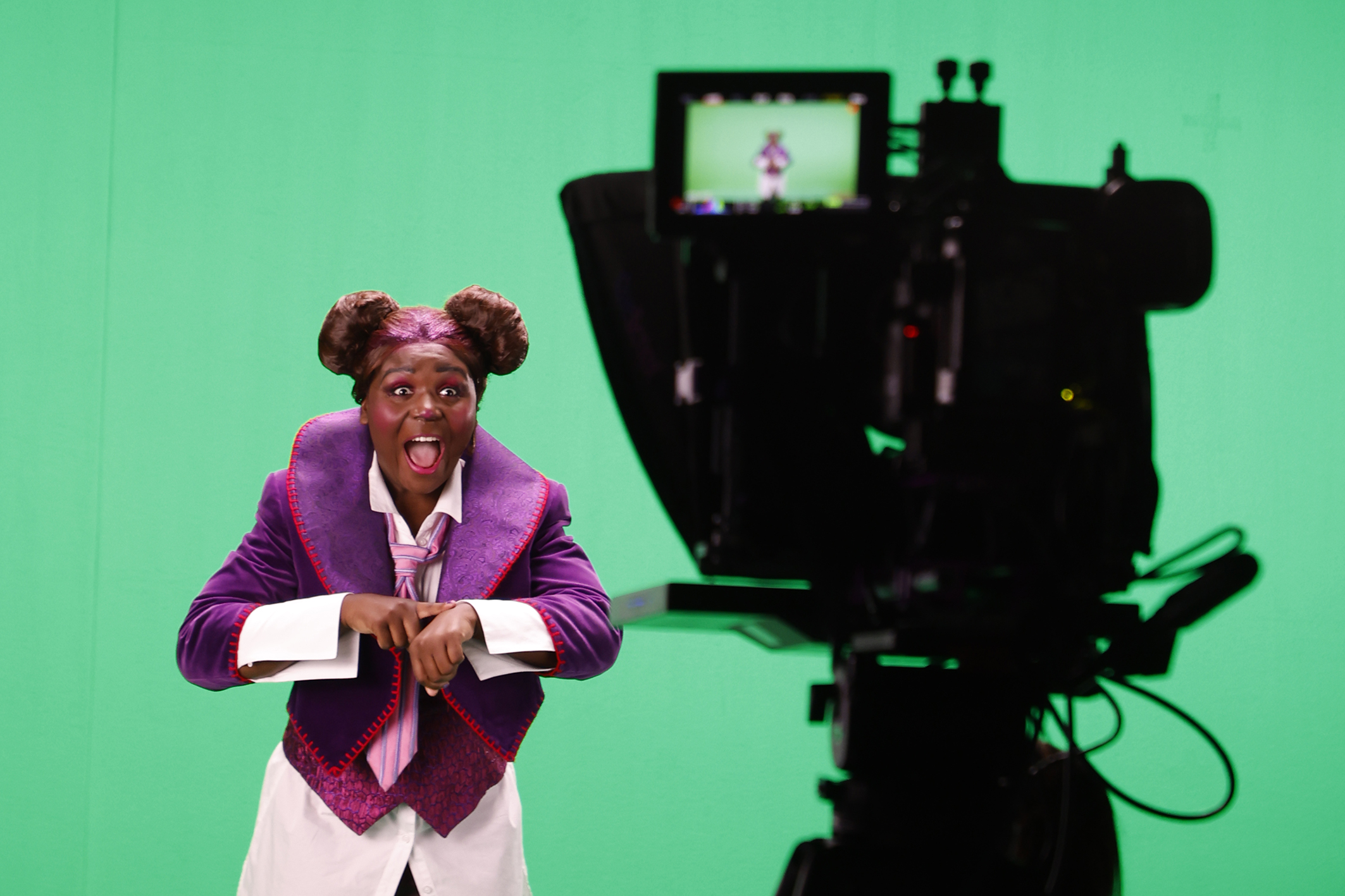We recently caught up with show director Matteo Borghi to learn more about the creative team’s approach to integrating an immersive signed performance in Alice & The Queen of Hearts: Back to Wonderland, which premiered at Walt Disney Studios Park in May as a modern take on the timeless story from the Walt Disney Animation Studios film Alice in Wonderland. Keep reading to find out how the show’s newest character is enhancing the overall guest experience and how her on-screen performance was brought to life behind-the-scenes.

What was the artistic direction for adding French Sign Language (LSF) into this show?
My wish from the start was that the signing performer would be a natural part of the show and an integral part of the offbeat world we were creating. I gave this performer the role of the Dormouse because, in the film, he takes part in the Mad Hatter’s tea party and loves tea, which is a recurring theme in the show. What’s more, the performer’s position as an observer means that they can take sides with Alice and the Queen at different moments in the show. With the French Sign Language coach and the writer, who brought the adaptation to life, we opted to mix pure adaptation with chansigne, an art form that consists of expressing the words of a song translated into sign language to the rhythm of the music. This allowed us to demonstrate both Alice’s dreamy pop spirit and the Queen of Hearts’ more rock-and-roll one.
How did you collaborate with the deaf-mute performer who signs in French Sign Language?
Working with the French Sign Language performer on this project was a real pleasure. She immediately understood the spirit of the show and was able to combine the personalities of the various characters with her own personality and humor. The result is a real explosion of energy and good humor, which fits in perfectly with the artistic direction of the other performers on stage.


Is this performer’s role comparable to those we find integrated in The Lion King: Rhythms of the Pride Lands or Mickey and the Magician?
It’s a bit in between the two. Like all of the artists in the show, the French Sign Language performer represents an iconic character, the Dormouse. From time to time, and to help the audience follow along, she also plays other roles such as the Mad Hatter, the Queen of Hearts or Alice – notably for the songs, but also in certain dialogues. We worked hard with the performer beforehand to define the characters, their characteristics and gestures, and to ensure that these character changes were clear and easy to understand.
Why did you decide to film and show the performance on screen, rather than having a live performer like on the other shows?
Given the size of the stage, and the fact that there’s so much happening, a live performer would have been difficult for guests to spot and follow. What’s more, by filming the performer beforehand, we were able to achieve the best possible image quality for each performance and integrate graphic effects that blended the character perfectly with the show’s visual identity.
How long did the project take from start to finish?
It’s a project that took almost a year to complete. Once the script and lyrics were finalized, I started working with our FSL coach and writer on the adaptation. We divided the show into several parts, then adapted and recorded each section. For the song, we were careful to respect both the meaning of each song and its rhythm and dynamics. We then rehearsed with our FSL performer to integrate each part, bringing her own vision and personality. In the end, we were able to film the whole performance in a single day. It’s a long yet enriching process, and it allowed me to discover a new world and see the show from a whole new angle.
How will this update improve the guest experience?
We are always looking for ways to elevate the guest experience, and the addition of French Sign Language helps guests who are deaf and hearing-impaired immerse themselves even more fully in the story, and to enjoy the show to the fullest. As for the show itself, it is enriched by a new character and an additional means of conveying emotions, which is the primary aim of any artistic creation.
Learn how to sign “Alice and the Queen of Hearts: Back to Wonderland” in this video:

En chargeant cette vidéo, vous acceptez la politique de confidentialité de YouTube.
En savoir plus

